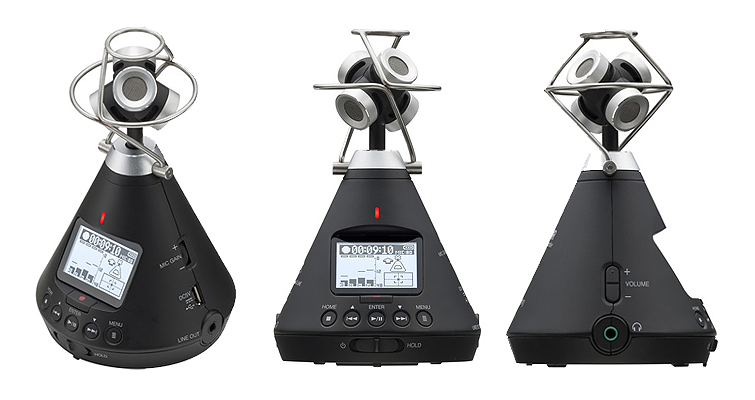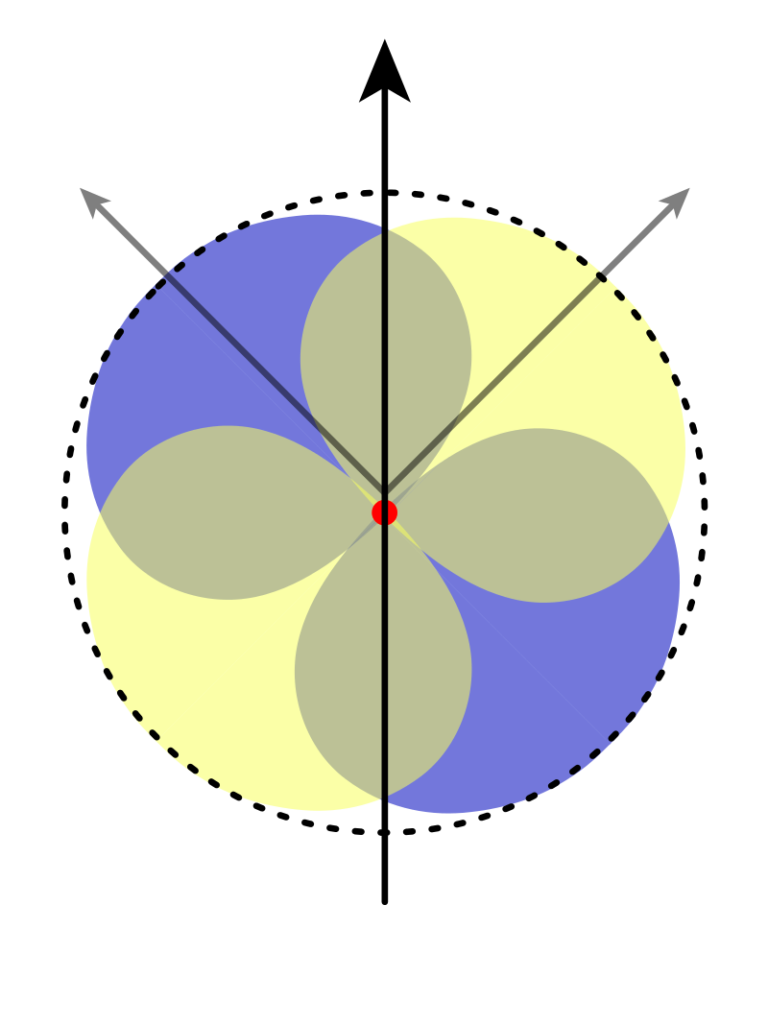A mid side stereo microphone is a type of stereo microphone configuration that uses two microphones: a directional microphone that picks up the “mid” or center channel of the sound and a figure-8 microphone that picks up the “side” or left and right channels of the sound. The microphones are set up so that the directional microphone points straight at the sound source and the figure-8 microphone is at a 90-degree angle to the directional microphone.
People often use mid side stereo microphone setups to have a lot of control over the stereo image of a recording. By using a directional microphone for the mid channel and a figure-8 microphone for the side channel, you can use a decoder to change the level of the side channel to change the balance of the stereo image after the recording has been made. This can be helpful if the stereo image needs to be changed or fixed after the recording.
People often use mid-side stereo microphones in recording studios and other controlled environments where a clear stereo image is needed. They are also sometimes used in field recording situations where the stereo image needs to be controlled in many ways.
Features of a Mid side stereo microphone
Here are some things that a mid-side stereo microphone might have:
Directional and figure-8 microphones: Mid-side stereo microphones usually use a directional microphone for the mid channel and a figure-8 microphone for the side channel. This gives you a lot of control over how the recording sounds in stereo.
Frequency response: The range of frequencies that a microphone can pick up is called its frequency response. A microphone with a wide frequency response can pick up both low and high sound frequencies.
Noise floor: A microphone’s noise floor is the amount of background noise or “self-noise” it makes when it’s not used to pick up a sound. When you record with a microphone that has a low-noise floor, there will be less background noise.
Dynamic range: A microphone’s dynamic range is between the loudest and softest sounds it can pick up without getting distorted. With a wide dynamic range, a microphone can record a wide range of sound levels without distorting.
Compatibility with audio recording devices: It’s important to ensure that the mid-side stereo microphone you choose works with your audio recording device or mixer. Some microphones may need extra parts, like a preamp or an interface, to work with some devices.
Stereo decoder: Many mid-side stereo microphones have a stereo decoder built in. This lets you adjust the side channel’s level and fine-tune the recording’s stereo image after it has been made.
High-quality materials and construction: Mid-side stereo microphones are often made with high-quality materials and are built to last because they are often used in professional recording environments where reliability is important.
Pros of a Mid Side Stereo Microphone
- High stereo image control.
- It can be used to capture music or other audio sources with left and right channels, such as a live concert or podcast.
- Allows stereo decoder fine-tuning after recording.
- Stereo microphones may be less susceptible to background noise and ambiance.
Cons of a Mid Side Stereo Microphone
- Good recordings may require extra setup and location.
- A multichannel microphone is more expensive.
- If a mono recording is all that’s needed or all that’s needed, it might need to be more flexible.
- It may not capture a location’s or event’s ambiance or stereo microphones.
What is a Mid Side Stereo Microphone and how does it work?
A Mid Side Stereo Microphone is a specialized microphone setup used for capturing stereo audio. It consists of two microphone capsules arranged in a specific configuration. The “Mid” capsule captures sound directly in front (center), while the “Side” capsule captures sound from the sides. During post-production, the signals from these capsules are manipulated to create a stereo image with adjustable width.
How do I decode the M/S signal for playback or mixing?
To decode the M/S signal from a Mid-Side Stereo Microphone, you need an M/S decoder or a plugin in your digital audio workstation (DAW). This decoder processes the “Mid” and “Side” signals to create a standard left and right stereo output, allowing for adjustments in stereo width.
Can I adjust the stereo width in post-production with a Mid-Side recording?
Yes, one of the primary advantages of Mid-Side recording is the ability to adjust stereo width during post-production. By manipulating the balance between the “Mid” and “Side” channels, you can control the perceived width of the stereo image to suit your preferences or the requirements of a particular project.
Are Mid Side Stereo Microphones suitable for live sound applications?
Mid-Side Stereo Microphones can be used in live sound reinforcement, especially for recording performances or capturing ambient sound in concert halls and auditoriums. They offer flexibility in post-processing and can provide a more natural stereo image compared to traditional stereo microphones.
What types of microphones are commonly used in Mid Side Stereo setups?
Typically, condenser microphones are used for Mid-Side recording due to their accuracy and sensitivity. However, the choice of microphones can vary depending on the specific application and desired sound characteristics.
Are there any challenges associated with Mid Side recording?
While Mid-Side recording offers many benefits, it requires careful microphone placement and precise decoding during post-processing. Achieving the desired stereo width and maintaining mono compatibility can be challenging without proper techniques and equipment.
Can I use Mid Side Stereo Microphones for podcasting or voice recording?
While Mid-Side recording is more commonly used for music and field recording, it can be applied to podcasting and voice recording. However, it may not be necessary for these applications unless you specifically require adjustable stereo width in your recordings.
Do I need special equipment or software to record with a Mid Side Stereo Microphone?
To record with a Mid-Side Stereo Microphone, you need a microphone with M/S capsules and a recorder capable of capturing M/S signals. You will also require an M/S decoder or software plugin for post-processing to achieve the desired stereo output.
Are there any specific techniques for achieving the best results with Mid Side Stereo Microphones?
Yes, achieving the best results with Mid-Side Stereo Microphones involves precise microphone placement, proper decoding techniques, and attention to phase coherence between the “Mid” and “Side” capsules. Experimentation and familiarity with the equipment are essential for optimal results.




